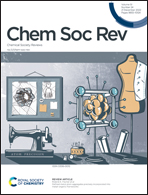Chemical approaches for electronic doping in photovoltaic materials beyond crystalline silicon
Abstract
Electronic doping is applied to tailor the electrical and optoelectronic properties of semiconductors, which have been widely adopted in information and clean energy technologies, like integrated circuit fabrication and PVs. Though this concept has prevailed in conventional PVs, it has achieved limited success in the new-generation PV materials, particularly in halide perovskites, owing to their soft lattice nature and self-compensation by intrinsic defects. In this review, we summarize the evolution of the theoretical understanding and strategies of electronic doping from Si-based photovoltaics to thin-film technologies, e.g., GaAs, CdTe and Cu(In,Ga)Se2, and also cover the emerging PVs including halide perovskites and organic solar cells. We focus on the chemical approaches to electronic doping, emphasizing various chemical interactions/bonding throughout materials synthesis/modification to device fabrication/operation. Furthermore, we propose new classifications and models of electronic doping based on the physical and chemical properties of dopants, in the context of solid-state chemistry, which inspires further development of optoelectronics based on perovskites and other hybrid materials. Finally, we outline the effects of electronic doping in semiconducting materials and highlight the challenges that need to be overcome for reliable and controllable doping.



 Please wait while we load your content...
Please wait while we load your content...